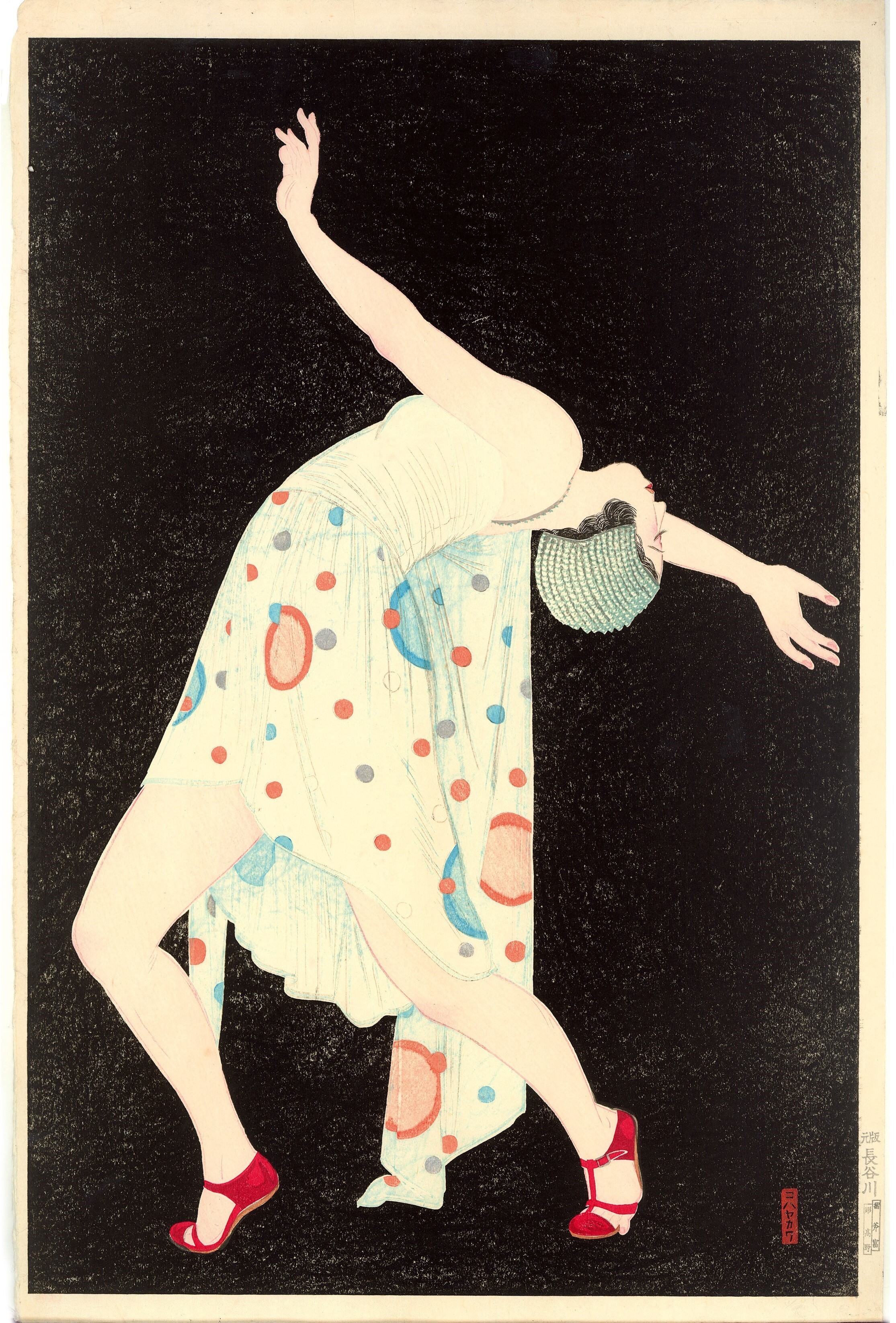
Kobayakawa Kiyoshi (1899-1948), Dancer, 1932. Woodblock print, Nihon no hanga - Japanese Print Collection.
Third Thursday Lecture: The Dawn of Modernist Dance in the Age of the Dancefloor
- 17 March 2022
- 18:00 (GMT)
- Online
- https://www.sainsbury-institute.org/info/the-dawn-of-modernist-dance-in-the-age-of-the-dancefloor
- 01603 597507
- sisjac@sainsbury-institute.org
- Tweet
In the late 1910s and early 1920s, a new modern self as a cosmopolitan subject grew aware of the universalized space of modern culture, in which Japan coexisted with other European countries. Though cosmopolitan and outward-looking, it was also an era of reflecting on the self as an individual before thinking about one’s relationship with society. Intellectuals actively sought to embrace the spiritual and cultural aspects of Western thought, philosophy, and literature; German idealism, Marxism theory, and Russian humanism of Leo Tolstoy and Fyodor Dostoevsky fused in one spatiotemporal framework. In parallel with the Jazz Age in the United States and Les Années folles in France, the Age of the Dancefloor (odoriba no jidai) in Japan saw an expansion of urban lifestyle and mass consumption as well as the cultural and social transformation. I argue that in opposition to the commodification of dance, modernist dance or dance art (buyō geijutsu) emerged as an independent art medium with its radically different forms of expression and ways of looking at the world. This talk is based on unpublished and ongoing research.
About the Speaker:
Daria Melnikova received her Ph.D. from the University of Pennsylvania in 2018, specializing in modern and contemporary Japanese art. Her research interests include the status of the body at moments of crisis, such as the ideological repressions of gender and sexuality during the empire and nation building; the postwar visibility of the body in the atomic and news media age; and the intersection of the individual and the community in public spaces of common memory. Currently, she works on a book manuscript examining modernist dance as a dynamic forum of creative exchange between visual artists, dancers, musicians, writers, film directors, and photographers in the cross-cultural context of Japan, Germany, France, and Russia from the early 1910s to the early 1930s. Her research also sheds light on the broader milieu of Japanese-Russian artistic and intellectual transnational relations in her recent article “What is Futurism? Russia and Japan Exchange Answers” (The Art Bulletin, March 2021). She taught at Columbia University and was also a Robert and Lisa Sainsbury Fellow at the Sainsbury Institute from 2020-2021.
How to book
Booking is essential. Use our booking form or email us.
You will receive a Zoom link and instructions for joining directly. To view the lecture or participate in the Q&A, please click on the link provided and enter your details when prompted.
Cancellations
If after booking you can no longer attend the event, you can cancel via the link at the bottom of your registration email.
